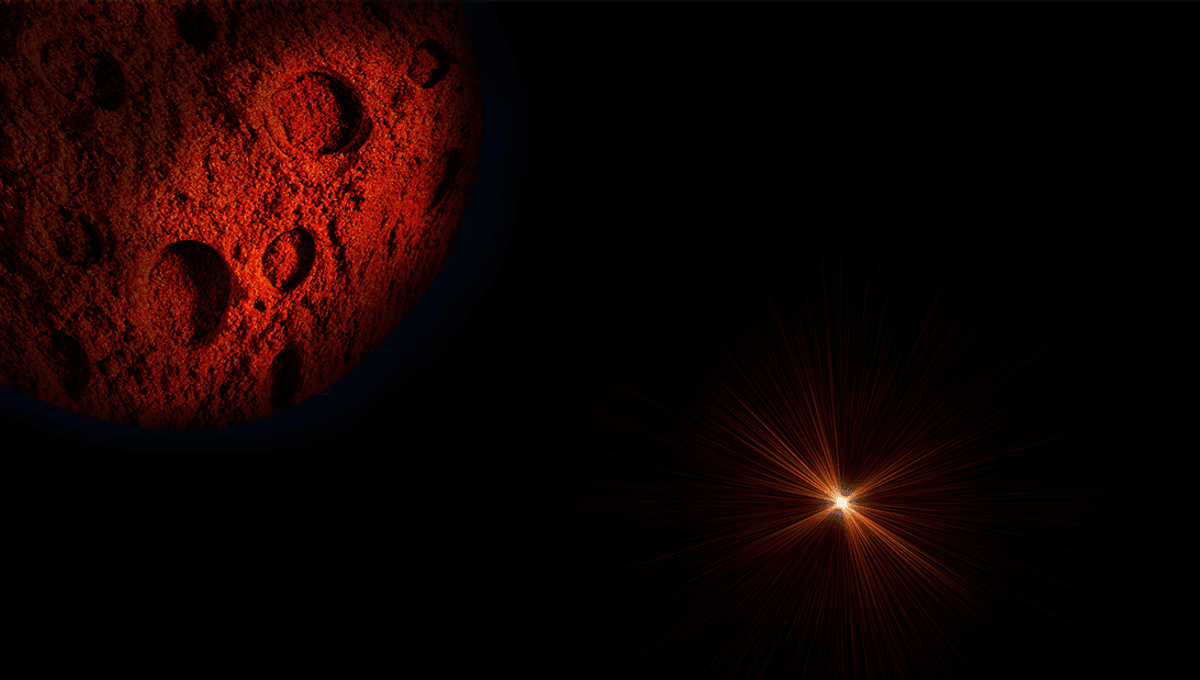
Primordial black holes (PBHs) could become captured by rocky planets and asteroids, where they may consume their liquid cores and leave them hollow, a team of physicists has suggested.
In the current age of the universe, black holes form when gigantic stars run out of fuel and collapse under their own gravity. This places a limit on how small a stellar black hole can be in the current universe; they have to form from large amounts of mass condensed into one small region, and only occur from stars around 20 times the mass of the Sun.
Primordial black holes, on the other hand, are hypothetical black holes that are proposed to have formed in the first few seconds of the universe, when all the stuff that would go on to create the stars and galaxies was more tightly packed together.
“In that moment, pockets of hot material may have been dense enough to form black holes, potentially with masses ranging from 100,000 times less than a paperclip to 100,000 times more than the Sun’s,” NASA explains. “Then as the universe quickly expanded and cooled, the conditions for forming black holes this way ended.” If they did form – and we have never detected one – it is possible that they could still be out there.
These primordial black holes have been suggested as candidates for dark matter, though we have never detected one to date. In a new paper, a team has suggested a way to look for them; by searching for planets or asteroids which they have entered and hollowed out.
The idea is relatively simple. If they exist and are roaming the cosmos, primordial black holes may become trapped within an object during or after its formation.
“If the object has a liquid central core, then a captured PBH can absorb the liquid core, whose density is higher than the density of the outer solid layer,” Dejan Stojkovic, professor of physics at the University at Buffalo College of Arts and Sciences explained in a statement.
After hollowing out the central core, the PBH could become dislodged, say from an impact event, leaving behind a hollow structure. Though you might reasonably expect such a structure to be unstable, looking at the strength and surface tension of natural materials like granite and iron, the team found that it could be stable providing that the object is less than one-tenth of the Earth’s radius.
“If it is any bigger than that, it’s going to collapse,” Stojkovic added.
As well as this, PBHs could simply pass through objects without causing too much damage, nor hollowing them out from the inside.
“It is also possible that an object like an asteroid is completely solid without a liquid core. In that case, the interaction with a PBH will not result in [a] hollow sphere,” the team wrote in their study. “Since the cross-section of a small [PBHs] is very small, a fast enough PBH will most likely create a straight tunnel after passing through the asteroid. Thus, the existence of straight tunnels in an asteroid could also be a sign of an interaction with a PBH.”
Though the idea sounds a little out there, it would give astronomers something to look for.
“It is interesting that some asteroids like Bennu and Ryugu are possibly hollow because of their low mass density,” the team writes, “though the most likely explanation for their low density is their rubble-pile structure, their discovery and measured properties imply that the search techniques already exist for this type of asteroids.”
Searching for signatures here on Earth may actually be a little easier, with the team suggesting that tiny PBHs passing through the Earth would leave tiny telltale tunnels. In the simplest detection method, we could look for these holes in old rocks and structures, or even just by monitoring a large, flat slab of metal for tiny tunnels over time.
“The chances of finding these signatures are small, but searching for them would not require much resources and the potential payoff, the first evidence of a primordial black hole, would be immense,” Stojkovic added. “We have to think outside of the box because what has been done to find primordial black holes previously hasn’t worked.”
As a topper, the team suggests that these black holes could worm their way through your body without you ever realizing it.
“While its kinetic energy can be huge, the energy that it can release during the collision with the human body is small,” the team writes. “Since the tension of the human tissue is small, it will not tear the tissue apart.”
The study is published in the journal Physics of the Dark Universe.
Source Link: Primordial Black Holes Could Be Consuming Planets From The Inside, Physicists Suggest